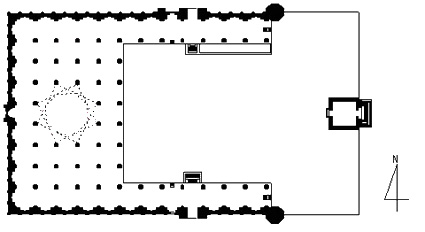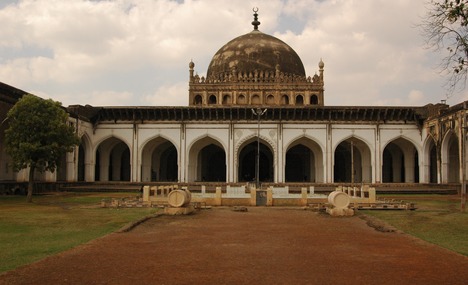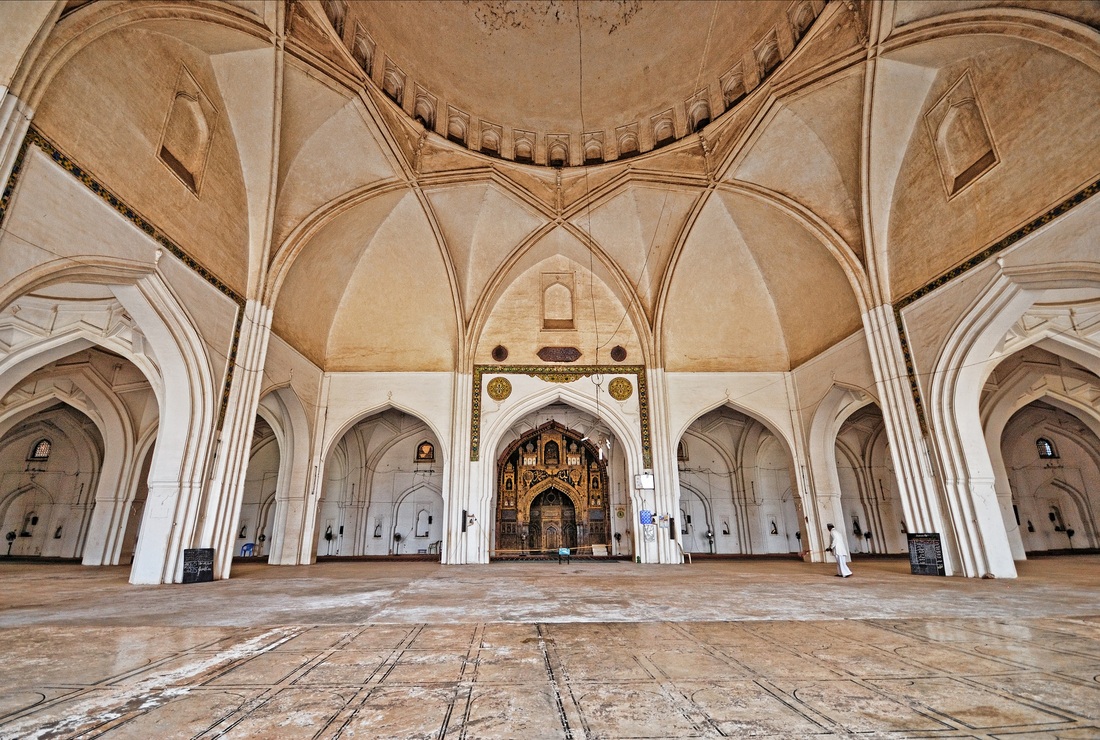Jami masjid At Bijapur
Jami Masjid At Bijapur
- Built in Bijapur during the reign of Ali Adil Shah, the Jami Masjid at Bijapur clearly shows the connection with the Bahmani style of the previous century.
- The structure was never completed, as it lacks the two minarets which were supposed to flank the exterior of its eastern entrance, the whole part being left unfinished.
- An entrance gateway was added later by the Mughal Emperor Aurangzeb.
- Other features such as the ornamental merlons above the parapet of the courtyard are also missing.
- The structure covers a rectangle 450' X 225'.
- The exterior has been treated by introducing two storeys of arcades recessed into the wall, the lower one being ornamental while the upper one is open and discloses an arched corridor running across the entire back and sides of the exterior.
- The courtyard is a square of 155' side, contained on three sides by seven arches on each side. On the west, this arcade shows a central opening emphasized by foliations, forming the facade of the sanctuary.
- A wide and deep cornice supported on brackets projects above this arcade.
- Above the middle of the sanctuary the arcaded square clerestory rises which supports the dome which is no longer stilted but hemispherical in shape with a metal finial crowned by the crescent symbol.
- The interior of the sanctuary is a large hall 208' X 107', divided into five aisles by arches on large masonry piers.
- The nave is a square of 75' diameter contained within 12 arches.
- The arches intersect at the top to form an octagonal cornice for supporting the base of. the dome.
- Around the nave are the square bays of the aisles, whose ceilings are built on the same principle as the nave, but modified to suit their smaller size.
- Ornamentation has been kept to a minimum, being of a broad and restrained order and any plastic treatment is of an architectonic nature, more for accentuating a line or space than for embellishment.
- An incongruous ornament, in the form of a mural design in relief was added at a later date but is confined to the mihrab arch.





